Boldly navigating the rigors of construction sites, workers endlessly face the uncertainties of weather. From drenching downpours to chilling snow showers, these are the people on the frontline. And what helps them stand tall amidst such adversity? Quality rain gear is the unsung hero of their toolkit! This article offers a comprehensive guide into the world of rain gear for construction work: why they are crucial, their construction and features, different types available, and how to select the best fit for specific jobs. We'll also dive into the innovations leading to more durable and comfortable gear, and even point you towards a few expert reviews and recommendations. As we unlock these details, you'll gain a solid understanding of why investing in proper rain gear is a game-changer for the everyday hero on the construction site. Settle in as we explore the tough and dependable world of construction work rain gear.
Importance of Quality Rain Gear in Construction Work
In the dynamic world of construction, workers often find themselves exposed to all kinds of weather conditions. Whether it's a warm summer's day or a cold, rainy season, the show must go on! The situation becomes tricky when it's raining, as the working conditions become not only uncomfortable but also potentially hazardous. That's where the importance of quality rain gear comes in to save the day. This article will elaborate on the role of quality rain gear and how it lends a protective hand to construction workers.
Protection from the Elements
First and foremost, quality rain gear provides robust protection against unfavorable weather, shielding construction workers from the harsh elements. From gusty winds to heavy rainfall, a well-made raincoat or a pair of waterproof boots can make all the difference.
- Keeps workers dry: The primary goal of rain gear is to keep the user dry, preventing them from catching a cold or falling ill due to prolonged exposure to the rain.
- Maintains comfort: Good quality rain gear is designed with user comfort in mind, often lined with breathable material to prevent excessive sweating.
- Ensures visibility: Many rain gear items come with reflective strips that increase the visibility of workers amidst heavy rain or fog, thus enhancing safety.
Think of these benefits as your trusty allies on a rainy day at the construction site. They'll shield you from the rain, keep you comfortable and ensure you're seen even in low visibility. In essence, quality rain gear boosts the morale of workers, enabling them to continue their tasks undeterred by the rainy conditions.
Increased Durability and Performance
Quality rain gear transcends beyond the simple concept of “staying dry”. It's also about durability and performance in demanding circumstances. Many top-grade rain gear products come with additional layers that enhance their durability and overall performance.
- Longevity: Quality rain gear is made from durable materials that withstand wear and tear, making them a great investment for long-term use at construction sites.
- Robustness: Reinforced seams, waterproof zippers, and tough fabric are all features contributing to the robustness of quality rain gear, reducing the likelihood of premature damage.
- Improved productivity: By keeping workers comfortable and dry, quality rain gear aids in maintaining their productivity levels even during challenging weather conditions.
In short, the right rain gear can endure countless rainy days, bear the rough handling of a demanding job, and keep construction workers at their productive best. Contrast this with the potential issues arising from substandard rain gear, like workers falling ill due to getting wet or a decline in productivity due to discomfort, and it becomes quite clear why investing in quality rain gear is so essential.
The bravery of construction workers who face extreme weather conditions head-on should be matched with the courage of their gear. As such, quality rain gear indeed holds a crucial role in the field of construction. So, remember, investing in the right gear is not just about staying dry; it's about ensuring safety, bolstering morale, enhancing work performance, and demonstrating respect for the challenging conditions that construction workers bravely face every day.
Construction and Features of Rain Gear
The magic of rain gear lies in its construction and the features designed to keep us dry during unexpected rainfalls or long-term outdoor projects. But what are the nuances of this unmatched guide against the rain? It's all about the fabric and design, measures for waterproofness and breathability, and, indeed, the balance between durability and affordability.
Fabric and Design
Traditional rain gear is meticulously designed, with the science of per- and polyfluoroalkyl substances (PFAS) at its core. These compelling materials imbue rain gear with formidable water-repellent qualities. Imagine enjoying a splendid walk in the park during a drizzle, confident that the raindrops will glide off your raincoat with absolute ease.
In the domain of heavy-duty rain gear for construction work, PVC, otherwise known as Polyvinyl chloride, is chief among durable and utterly waterproof materials. Taking on the challenges of construction sites becomes gracefully manageable when you are clad in PVC rain gear.
Waterproofness and Breathability
Here is a paradox: a garment that is impervious to water yet allows your skin to breathe. Curating this delicate balance is fundamental to crafting superior rain gear. You should not feel suffocated and sweaty while you jubilantly embrace the rain.
Sentinel™ material stands as a revolution in this section. This material, frequently used in construction rain gear, is not only celebrated for its durability but also its breathability. Furthermore, it offers robust protection against electric arcs and flash fires, ensuring the highest level of safety for those in the construction field who are vulnerable to such hazards.
Durability and Affordability
What is the use of a rain gear that does not last? Conserving those coins in your pocket becomes a meaningless quest if you are back in the store searching for new rain gear after every stormy week.
The upper hand is given to durable fabrics with water repellent coatings in this regard. Not only are they more cost-effective in the long run, but they promote fast drying and moisture-wicking as well. These features enhance the life expectancy of your rain gear and offer an invaluable sense of functionality and comfort.
So, whether you find joy in dancing in the rain or deal with the drizzles professionally, having the right rain gear is essential. And now, with a better understanding of its construction and features, navigating your options can be as smooth as a quiet walk under a gentle rain.
Types of Rain Gear Construction
When it comes to sturdy and durable rain gear, a noteworthy amount of precision and technicalities is involved in its entire manufacture. Particular attention to detail helps in offering an unrivaled level of protection against the elements, while providing maximum comfort. The three main components that contribute to this protective construction are the seams, tapes, trims, laminate constructions, and a durable water repellent (DWR) finish.
Seams, Tapes, and Trims
The first focus of quality construction involves the gear's seams, tapes, and trims. They are the primary point of entry for water, especially where two fabric pieces are joined. Therefore, it is crucial to ensure that these parts are correctly sealed, stitched, and protected. Specialized methods, like taped seams and waterproof zippers, are employed to prevent any possible leaks. Other significant factors include the design and placement of pockets, vents, and trims. These elements not only add to the aesthetic appeal of the rain gear, but when chosen carefully, they enhance the garment's functionality too.
Laminate Construction
Moving on to the second component - laminate construction. This method is usually found in rain gear designed for extreme environments. It involves a membrane sandwiched between two layers of fabric—explaining the term 'laminate.' The membrane is protected by the face fabric on the outside, and another layer inside offers comfort to the wearer. This construction is preferred for heavy rain conditions since the laminate construction offers superior waterproof capabilities.
Durable Water Repellent (DWR) Finish
Last but not least, the finishing touch of rain gear production. The application of a Durable Water Repellent (DWR) finish. It's an invisible and thin layer applied on the outer fabric which works tirelessly to repel water away from the surface. This finish doesn't compromise the breathability of the rain gear and instead helps in maintaining its waterproofness over a long duration, even after heavy use.
When shopping for the perfect rain gear, understanding these different construction elements can make a significant difference in your comfort and protection against the relentless rain. So, be sure to keep an eye out for these details next time you're in the market for new rain gear.
Innovations in Rain Gear
Even if you work in the most challenging and unpredictable weather conditions, technological advances in rain gear can keep you dry and comfortable. From breathable fabrics to seam-sealed construction and laminated materials, innovative solutions are continually being developed, aiming to improve the lives of outdoor workers. This article will delve deeper into the exciting world of advanced rain gear, its implications for industries such as construction, and its benefits for workers who frequently battle the elements.
Breathable Fabrics
Rain gear's fundamental purpose is to protect you from the rain. However, advanced rain gear technologies extend beyond merely keeping you dry. Modern rain gear products often use breathable fabrics, commonly nylon and polyester, that can keep you dry while still allowing your skin to 'breathe'. The result? Less perspiration and more comfort even when you're working under heavy rain or stormy weather.
Breathable fabrics can:
- Prevent excessive sweating
- Ensure good airflow to help you stay cool
- Keep you dry inside and out during rain showers
Seam-sealed Construction
Another critical development in rain gear is seam-sealed construction, which further enhances its waterproof efficiency. Notably, a rain jacket with this type of construction offers superior protection because all potential leakage points—the seams—are completely sealed. Thus, even if you encounter a heavy downpour, you can rest assured that water won't sneak its way in.
Seam-sealed construction benefits include:
- Providing excellent waterproofing
- Ensuring long-lasting protection
- Adding durability to the gear
Laminated Fabrics
Finally, we shouldn't overlook the laminated fabrics used in advanced rain gear. Essentially, these are layers of materials bonded together to increase weather resistance. Whether you're challenged by blustery winds, torrential rains, or freezing snow, a jacket crafted with laminated fabrics can be your dependable ally.
Key benefits of laminated fabrics include:
- Extra layers of protection against the elements
- Enhanced durability for long-term use
- Improved comfort due to insulation properties
From sturdy protection against relentless weather to enhanced comfort and durability, these novel rain gear technologies truly reveal how far we've advanced. With such gear at our disposal, we can ensure construction workers and outdoor professionals alike stay equipped to handle whatever Mother Nature might throw their way.
Rain Gear for Specific Industries
Diving headfirst into our discussion, it's crucial to grasp the importance of owning proper rain gear, especially, if your job involves a significant amount of exposure to outdoor environments. The practicality of this protective apparel extends beyond just staying dry in heavy rain, but also involves maintaining comfort and ensuring protection in numerous industry-specific jobs from trail workers to ironworkers. While specific rain gear requirements vary across industries, one principle remains the same: worker safety and comfort.
Trail Work
First, let's explore the world of trail workers. These brave souls regularly face the elements, so proper rain gear is more of a necessity than a luxury. Trail work involves extended periods in the open where weather can be unpredictable. Being soaked in the rain isn't just uncomfortable; it can lead to hypothermia or other cold-related ailments in cooler climates.
Key features for trail work rain gear are:
- Waterproof material
- Breathability to prevent overheating
- Durability to withstand the rigors of the job
These characteristics align with the idea that rain gear is meant to help maintain comfort and protect trail workers from the harshness of their environment.
Ironworkers
Moving on to ironworkers, they too have a high stake in the rain gear they choose. Ironworkers, who install structural and reinforcing iron and steel, ply their trade in precarious settings, often at heights and in adverse weather conditions. They require durable rain gear that not only protects them from the elements but also won't rip or tear easily when faced with the rough nature of their work.
For ironworkers, desirable rain gear features include:
- Extra-durable materials to resist tear
- Comfortable fit for ease of movement
- High-cut boots for ankle support and protection
The emphasis here is on durable and functional rain gear to shield ironworkers on construction sites.
High-Visibility Gear
Lastly, we shift our attention to high-visibility rain gear, a requisite safety feature in multiple industries, particularly construction. Often adorned in fluorescent shades with reflective stripes, these hi-vis jackets and suits heighten visibility, ensuring that workers are easily spotted, thus significantly reducing the risk of accidents on busy sites.
The most desirable features of high-visibility gear include:
- Bright or fluorescent colors
- Reflective stripes or tapes
- The waterproof feature that doesn't compromise visibility
Prominent across several industries, the goal of high-visibility rain gear is to enhance worker visibility while offering a high level of protection against rain and other elements.
Wrapping Up
Whether on a trail or at a construction site, weather-related challenges are a common part of outdoor work. Each industry has its unique requirements when it comes to rain gear. But, the common thread remains: the gear must offer comfort, protect against harsh weather, and sometimes, enhance visibility. In a world where every industry comes with its set of challenges, wearing the right gear can make all the difference.
Selecting Rain Gear
When those dark, stormy clouds swell up in the sky and the first raindrop splashes on the ground, we all immediately grasp for our trusted allies against mother nature's drenching downpours: our rain gear! However, the selection of rain gear isn’t just an off-the-cuff decision and you shall make it judiciously considering its significant factors like waterproofness, durability, breathability, and comfort.
Factors to Consider
While the necessity for rain gear during a rainy day is general knowledge, the parameters that contribute to selecting ideal rain gear might not be common knowledge.
- Waterproofness: At the top of the list is, naturally, waterproofness. To serve the primary purpose of keeping you dry, your rain gear needs to provide a high level of water resistance. Consider the fabric and the seams as they are the most likely areas for water seepage.
- Durability: While providing shelter from the rain is necessary, what’s equally important is the durability of the gear. It should effectively withstand the rough and tumble of daily use without compromising on its protective capabilities.
- Breathability: - Don't underestimate the significance of breathability in rain gear. A breathable fabric prevents the build-up of body heat and perspiration, making the gear comfortable to wear for extended periods.
- Comfort: No matter how waterproof or durable your rain gear might be, if it doesn’t offer comfort, then it's not worth it. Look for the fit, adjustability features, and the flexibility of movement while choosing your rain gear.
"When life gives you rainy days, wear cute boots and jump in the puddles."
Remember, the right rain gear can turn any gloomy, rainy day into an enjoyable one!
Understanding the factors involved in selecting ideal rain gear helps narrow down the options, ensuring that you're well-equipped to face any rainy day with a smile. So the next time you hear the pitter-patter of rain on your window, smile, reach out for your rain gear, step outside, and dance in the rain!
Maintenance and Care
Maintaining your rain gear properly plays an instrumental role in its longevity and effectiveness. Think of it as preserving your shield against those heavy downpours. It's crucial to keep this shield in excellent condition with regular attention and care. Amongst the various elements of maintenance, a standout facet is caring for the durable water repellent (DWR) finish on your rain gear.
A trademark feature of high-quality rain gear, DWR is a protective layer that restricts water from soaking into the outer fabric layer. More than a mere surface treatment, it's responsible for the beads of water that form and roll right off your gear during light rain or mist, thus preventing the fabric from becoming oversaturated.
Now, the key point to note here is that this superhero of a layer isn't invincible. After exposed to natural elements, frequent use, and inevitable wear and tear, the DWR finish can deteriorate. However, fret not. You can breathe life back into this protective coating with regular maintenance.
To maintain the DWR finish effectively:
- Clean your gear regularly: It may sound counterintuitive, but frequent cleaning can indeed rejuvenate the DWR layer. Accumulated dirt and oils can hinder the performance of the DWR finish, so keeping the gear clean ensures it functions at its best.
- Reapply the DWR finish periodically: Retail stores offer DWR sprays, washes, and other products ideal for reapplication. Remember, this isn't a one-and-done process; the layer needs regular reapplication for optimum effectiveness.
- Dryer time works wonders: Believe it or not, a little heat can help revive the DWR finish. Post washing, consider popping the gear in a dryer on low to medium heat (if the care instructions permit, of course!).
Consider your rain gear as a long-term investment. Perfect maintenance practices, particularly for the all-important DWR finish, ensure that this investment continues to offer waterproof protection, keeping you dry and comfortable, even when the weather is far from it.
Expert Reviews and Recommendations
When it comes to purchasing new gear, especially rain gear, you want to ensure you're making a sound investment. It's here that expert reviews and recommendations play an integral role. By leveraging the skill and knowledge of experts in the field, you can gain valuable insights into the performance, durability, and comfort of the products you’re considering.
Gear Testing
It is through comprehensive gear testing that experts ascertain the exact capabilities of different rain gear. These gear testers exposed every piece of equipment to a series of rigorous tests, from simple drizzles to raging torrential downpours.
During these tests, they assess various critical elements:
- Performance: This metric encompasses how well the gear stands up to rainfall. How much water can it keep out? Does it effectively prevent any seepage?
- Durability: The longevity of the rain gear is determined in this stage. Can it withstand numerous uses and washing cycles without the efficiency diminishing?
- Comfort: Lastly, the gear's comfort level is evaluated. How does it feel when worn? Does the material cause any discomfort or itchiness?
By meticulously analyzing these factors, gear testers provide detailed and honest reviews of each product. Their objective appraisals are instrumental in helping prospective buyers make informed decisions.
Recommended Rain Gear
Following a thorough evaluation, gear testers often recommend the rain gear that offered exemplary performance. These recommendations are guided by real-world performance and not merely by brand name or price tag.
Factors that influence these recommendations include:
- Reliability: How consistently does the gear perform? Can it be relied upon in various weather conditions?
- Price vs. Value: Is the product worth its cost? Does it offer good value for the price?
- User Feedback: What do other users have to say about the gear? Are their reviews positive?
Expert reviews and recommendations thus take the guesswork out of shopping for rain gear. Armed with this knowledge, you are ensured a product that is thoroughly tested, fine-tuned, and reliable for whatever weather comes your way.
Let gear testing and expert recommendations guide you to your ideal rain gear. Make your purchase not on assumptions, but on solid, tested facts presented by experts who have experienced first-hand the performance and quality of these products. You'll thank yourself when you're dry and comfortable the next time a storm hits!
Conclusion
As we brave the storm of life and career, having a strong and dependable ally makes a significant difference. For construction workers and those engaged in similar industries, the ally comes in the form of weatherproof, comfortable, and durable rain gear. That’s where Hurricane Raingear, a trusted name in all-weather protection, aims to make a difference. Handcrafted in the Pacific Northwest, Hurricane Raingear's selection offers a perfect balance between comfort and durability, effectively shielding you from the elements while ensuring an unrestricted range of motion.
From breathable fabrics, seam-sealed construction, to a durable water repellent finish, Hurricane Raingear uses the latest innovations to provide premium rain gear that influences not just the physical comfort, but also the work performance and safety of its users. With thoughtful features like reflective 3M striping for enhanced visibility and the use of 100% North-American-made materials, Hurricane Raingear brings both quality and confidence right to your doorsteps.
Choosing the right rain gear can be a lifesaver in the field. It reduces the risk of work-related incidents, improves efficiency, and allows you to focus on the task at hand regardless of the weather. With Hurricane Raingear, you are investing in your safety, productivity, and peace of mind. Explore their myriad of products that cater to specific industries, each superior in design and promise. Make the right choice. Choose comfort, choose safety, choose Hurricane Raingear. Remember, in a world that’s unpredictable, your gear doesn't have to be.
Frequently Asked Questions
-
What are the key features to look for in rain gear for construction work?
Key features to look for in rain gear for construction work include durability, waterproof and windproof materials, reinforced seams, adjustable cuffs and hems, high-visibility colors or reflective strips, multiple pockets for storage, and a comfortable fit.
-
Is it important to choose rain gear that is specifically designed for construction work?
Yes, it is important to choose rain gear that is specifically designed for construction work. Construction work requires tougher and more durable gear that can handle the demands of the job, such as reinforced seams and materials that can withstand rough conditions.
-
What are some recommended brands for rain gear suitable for construction work?
Some recommended brands for rain gear suitable for construction work are Carhartt, Helly Hansen, Dickies, Columbia, and Caterpillar. These brands are known for producing tough and dependable gear that can handle the demands of construction work.
-
Can rain gear for construction work be used for other outdoor activities?
Rain gear designed for construction work can often be used for other outdoor activities such as hiking, camping, or fishing. The durable and waterproof materials make them suitable for various outdoor adventures in wet weather conditions.
-
How should I care for my rain gear to ensure its longevity?
To ensure the longevity of your rain gear, it is important to follow the manufacturer's care instructions. Generally, you should wash it according to the recommended method, avoid using harsh detergents or fabric softeners, hang it to dry, and store it in a dry place away from direct sunlight.







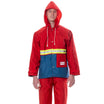
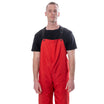
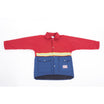
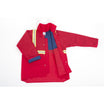

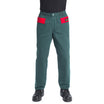
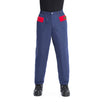
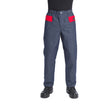
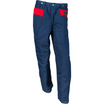
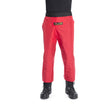
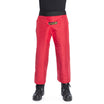
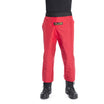
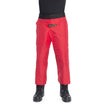

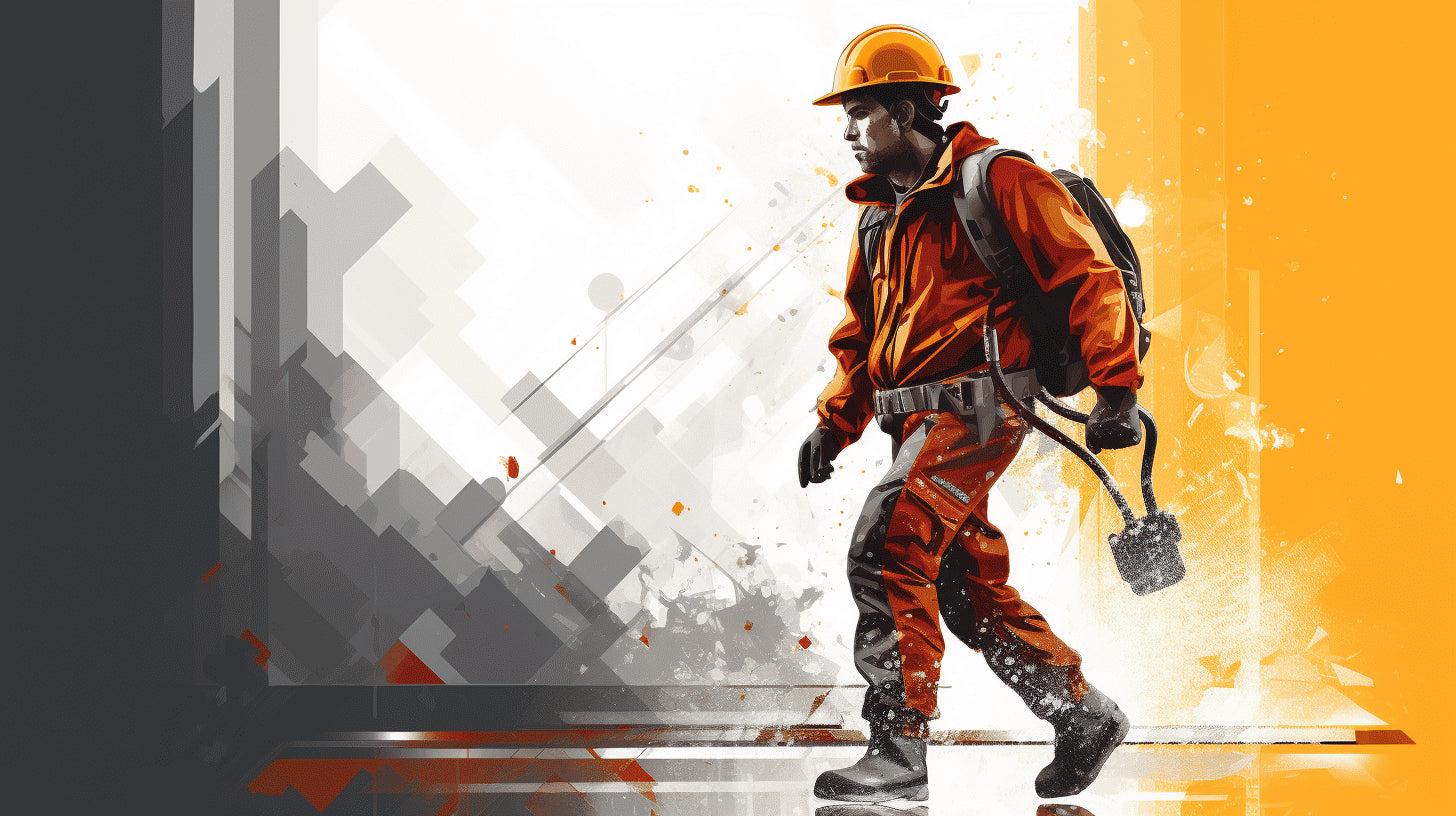
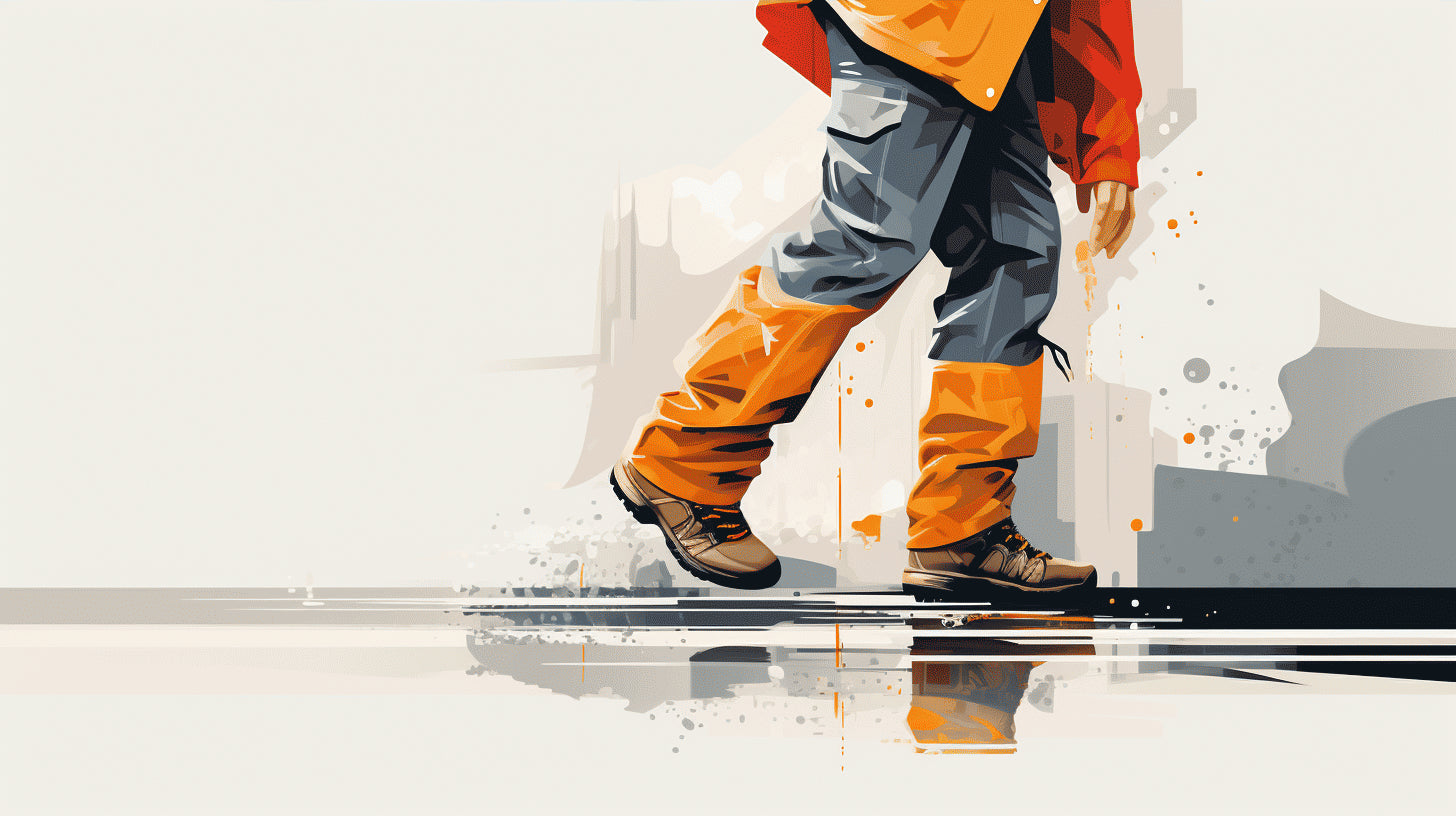
Leave a comment
This site is protected by hCaptcha and the hCaptcha Privacy Policy and Terms of Service apply.